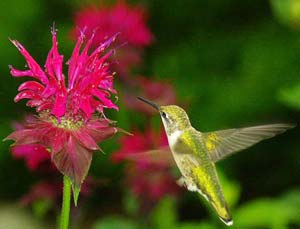 Why can tiny hummingbirds hover above a flower for an extended period? Douglas Warrick, a zoology professor at Oregon State University, utilized a specialized device to capture extremely brief moments in the wing movements of hummingbirds, approximately 250 microseconds (one microsecond is one-millionth of a second). This technology allowed him to analyze the airflow around the hummingbird’s wings and provide detailed insights into its flight phenomenon.
Why can tiny hummingbirds hover above a flower for an extended period? Douglas Warrick, a zoology professor at Oregon State University, utilized a specialized device to capture extremely brief moments in the wing movements of hummingbirds, approximately 250 microseconds (one microsecond is one-millionth of a second). This technology allowed him to analyze the airflow around the hummingbird’s wings and provide detailed insights into its flight phenomenon.
He discovered that hummingbirds generate 75% of their lift from the downstroke of their wings, while the remaining 25% comes from the upstroke. Generally, hummingbirds can be seen as a bridge between birds, which gain lift solely from the downstroke, and insects, which achieve lift through a combination of downstroke and upstroke. It is noteworthy that in other bird species, 100% of the lift is generated from the downstroke, whereas in insects, the distribution is typically 50-50.
Douglas Warrick believes that this experiment provides compelling evidence for the phenomenon of evolutionary convergence—organisms that are not closely related but evolve similar traits to exploit their environments effectively.
NGUYỄN SINH




















































